Goat farming has been an essential part of agriculture for centuries, providing meat, milk, and fiber to communities around the world. However, with advancements in technology and a growing demand for sustainable farming, the future of goat husbandry is evolving. From automated feeding systems to genetic selection for disease resistance, goat farmers are embracing new technologies to improve efficiency, productivity, and animal welfare. In this blog, we will explore the latest innovations in goat farming technology and how it is shaping the future of this ancient practice.
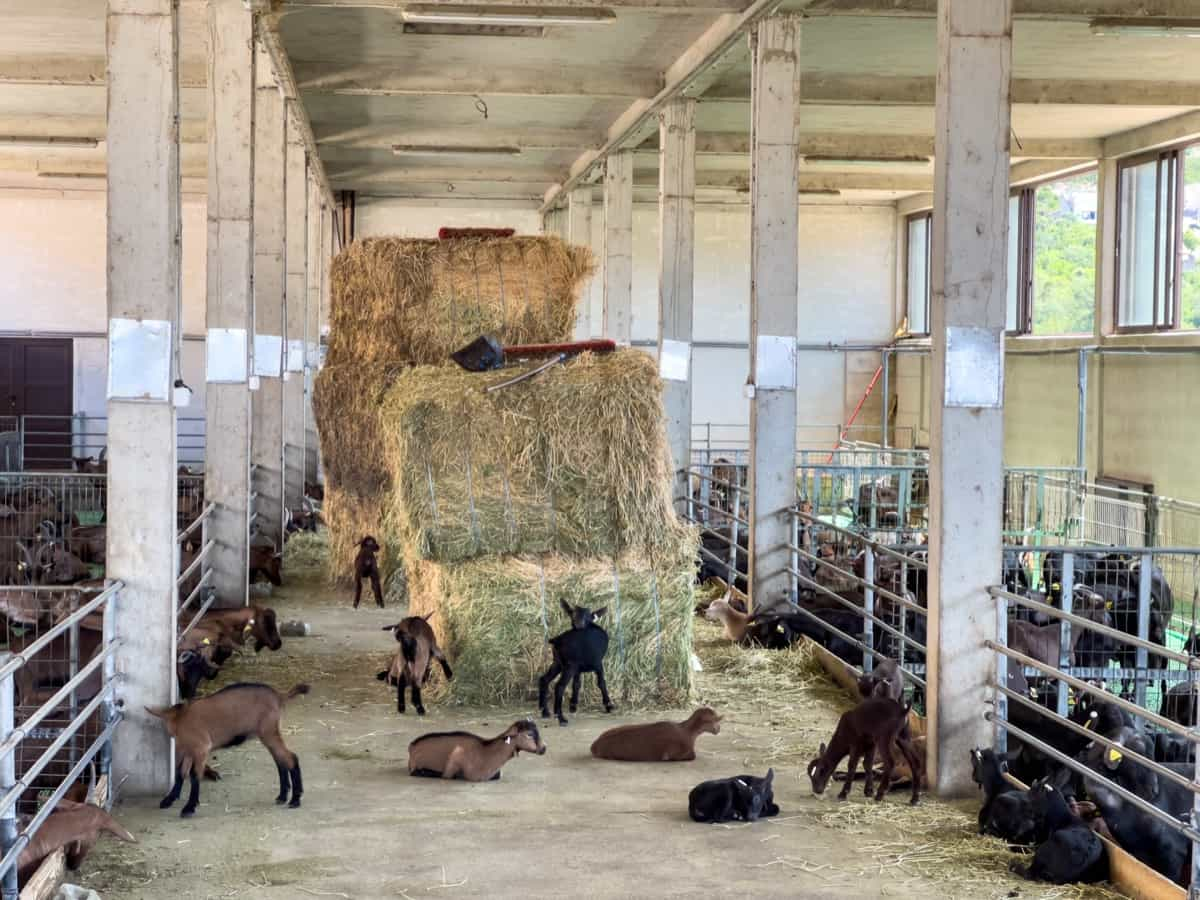
Advanced Breeding Techniques for Enhanced Goat Productivity
Advanced breeding techniques are revolutionizing the goat farming industry by allowing farmers to enhance productivity and quality in their herds. One such technique is artificial insemination, which enables farmers to breed their goats with superior genetics without the need for physical mating. This allows for the selection of specific traits such as disease resistance, milk production, and meat quality. Additionally, embryo transfer technology allows farmers to multiply the offspring of their best-performing goats, further improving the overall productivity of the herd.
Genetic selection through DNA testing is another advanced breeding technique that is gaining popularity. By analyzing the genetic makeup of individual goats, farmers can identify desirable traits and make informed breeding decisions to improve the overall quality of their herd. These advanced breeding techniques not only enhance productivity but also help in the development of more resilient and high-performing goat breeds for the future of goat farming.
Utilizing Precision Agriculture in Goat Farming
Precision agriculture involves using technology and data-driven tools to optimize farming practices and improve efficiency. In goat farming, precision agriculture can enhance productivity, reduce costs, and promote sustainability. Goat farming may benefit from precision agriculture in part by tracking and observing the movement and behavior of the goats in the pasture using GPS technology. Grazing schedules, feed distribution, and herd management may all be better choices made by farmers with this information.
Vital indicators, like temperature and heart rate, may also be tracked in individual goats using sensors and monitoring equipment to identify health problems early on. This proactive approach to animal health care may reduce veterinarian expenses and enhance herd health. Overall, precision agriculture in goat farming can lead to more efficient operations, better resource management, and, ultimately, increased profitability for farmers.
Innovative Feeding Solutions for Optimal Goat Health
Innovative feeding solutions play a crucial role in maintaining optimal health and productivity in goats. One such solution is the use of precision feeding systems, which allow farmers to tailor feed rations to individual goats based on their nutritional needs and production goals. This ensures that each goat receives the right balance of nutrients, leading to improved health and performance.
In case you missed it: How to Build a Low-budget Goat Shed: Cheap Ideas and Tips
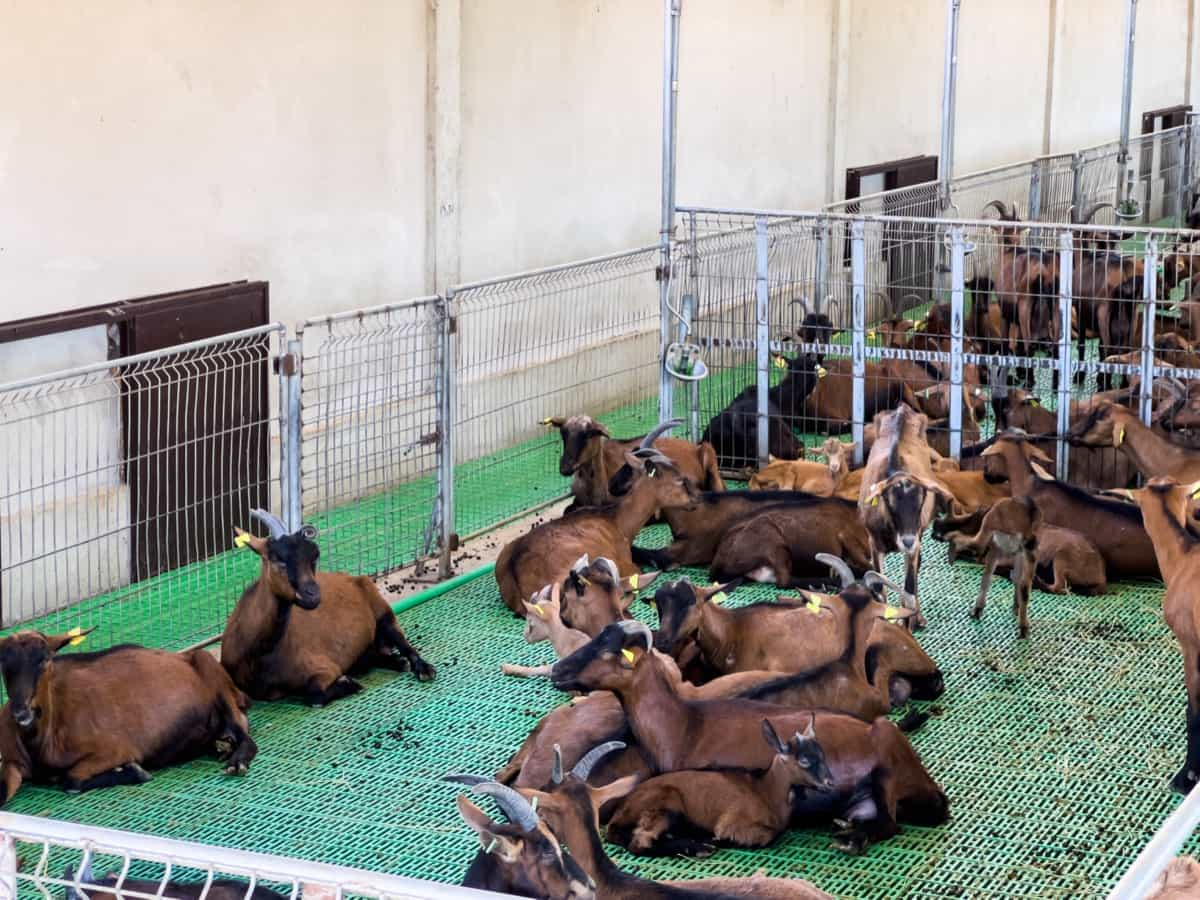
Another innovative feeding solution is the use of alternative feeds and forages, such as hydroponically grown fodder or silage. These can help reduce feed costs and provide a diverse diet for goats. They can also supplement grazing during periods of drought or limited forage availability.
Smart Monitoring Systems for Goat Health and Wellness
Smart monitoring systems for goat health and wellness utilize advanced technology such as sensors, wearable devices, and data analytics to track and analyze key health indicators in goats. These systems can monitor parameters like body temperature, heart rate, activity levels, rumination, and even GPS location in real-time. By collecting and analyzing this data, farmers can detect early signs of illness, monitor reproductive cycles, optimize feeding schedules, and ensure the overall well-being of their goats.
Smart monitoring systems also enable remote monitoring, allowing farmers to keep a close eye on their goats even when they are not physically present on the farm. This proactive approach to goat health management can lead to early intervention, reduced veterinary costs, improved productivity, and, ultimately, better quality of life for the goats.
Sustainable Pasture Management for Goat Farms
Smart monitoring systems, such as wearable devices and sensors, allow farmers to remotely track the health and behavior of individual goats in real time. This enables early detection of health issues, improved management practices, and enhanced overall herd welfare. Precision agriculture techniques, including GPS tracking, data analytics, and automated feeding systems, help optimize pasture management, feed allocation, and breeding programs.
These technologies allow farmers to make data-driven decisions, reduce costs, and increase productivity. Genetic selection tools, such as DNA testing and artificial insemination, allow farmers to improve the genetic quality of their herds by selecting for desirable traits like disease resistance, milk production, and meat quality.
Implementing Automated Milking Systems in Goat Dairy Farms
These systems typically consist of robotic milking units that can automatically milk individual goats without the need for human intervention. Automated milking systems provide several advantages, including increased milking efficiency, labor savings, and improved milk quality. By allowing goats to be milked on their schedule, these systems reduce stress and improve the overall welfare of the animals.
In case you missed it: Goat Farming Training Programs in India: A Beginner’s Guide
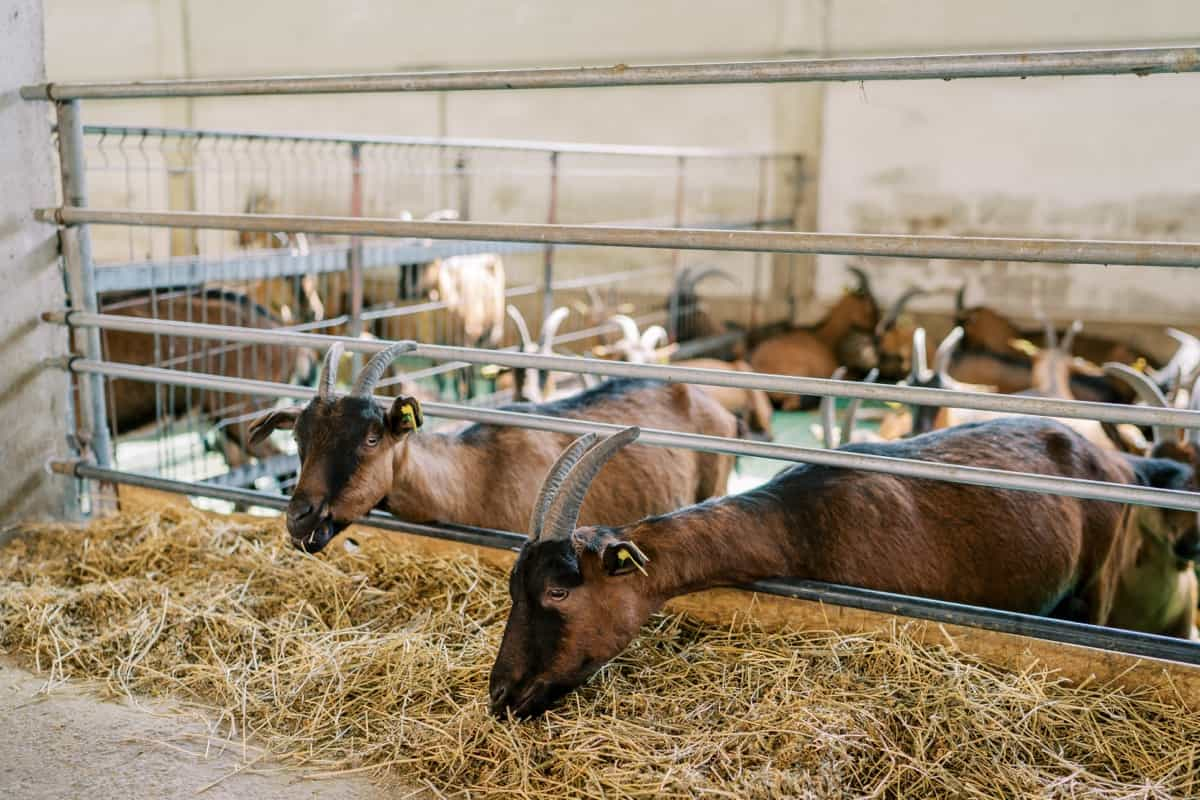
Additionally, the precise monitoring and data collection capabilities of automated milking systems enable farmers to track individual milk production, detect health issues early on, and optimize feeding and management practices. Automated milking systems can enhance biosecurity measures by reducing human-animal contact, minimizing the risk of contamination, and improving overall hygiene in the milking process. Overall, implementing automated milking systems in goat dairy farms can lead to increased productivity, profitability, and sustainability in the dairy operation.
The Role of Genetics in Modern Goat Farming
Genetics in modern goat farming, as they influence various aspects of goat production, including milk yield, meat quality, disease resistance, and reproductive performance. Selective breeding programs aim to improve desirable traits in goats through genetic selection, such as increased milk production, faster growth rates, and better adaptation to specific environments.
Genetic technologies, such as DNA testing and artificial insemination, allow farmers to make informed breeding decisions and accelerate genetic progress in their herds. By selecting superior genetics, farmers can enhance the overall productivity and profitability of their goat farming operation. By preserving and managing genetic diversity within goat breeds, farmers can reduce the risk of inbreeding and increase the overall resilience of their herds to diseases and environmental challenges.
High-Tech Housing Solutions for Goats
High-tech housing solutions for goats incorporate advanced technology to provide a comfortable, safe, and efficient living environment for the animals. These solutions include features like automated climate control systems, ventilation systems, lighting controls, and automated feeding and watering systems.
Automated climate control systems help regulate temperature and humidity levels within the goat housing, ensuring optimal conditions for the animals year-round. Ventilation systems help maintain air quality and prevent the buildup of harmful gases, while lighting controls can simulate natural daylight patterns to promote healthy growth and reproduction.
Automated feeding, watering systems ensure that goats have access to fresh food and water at all times, reducing labor requirements and minimizing feed wastage. These high-tech housing solutions enhance goat welfare and productivity and improve overall efficiency and sustainability in goat farming operations.
Integrating Renewable Energy Sources in Goat Farming
Integrating renewable energy sources in goat farming can offer numerous benefits by reducing operational costs, increasing sustainability, and minimizing environmental impact. Solar panels, wind turbines, and biomass energy systems are common renewable energy sources that can be utilized on goat farms.
Installing solar panels may provide energy for other agricultural equipment as well as lighting, heating, and ventilation. The farm may have dependable power from wind turbines, which can capture wind energy. Farm organic waste, like manure and crop leftovers, may be used by biomass energy systems to generate biogas or biofuels for cooking, heating, or power production.
Advanced Disease Prevention and Control in Goat Herds
Advanced disease prevention and control strategies are essential for maintaining the health and productivity of goat herds. Implementing a comprehensive disease management plan involves a combination of biosecurity measures, vaccination programs, regular health monitoring, and prompt treatment protocols.
Biosecurity measures, like controlling access to the farm, quarantining new animals, and maintaining proper hygiene practices, help prevent the spread of diseases within the herd. Vaccination programs tailored to the specific disease risks in the region can provide immunity against common pathogens.
In case you missed it: Top 20 Goat and Sheep Weight Gain Supplements: Best Sheep and Goat Weight Gain Formulas
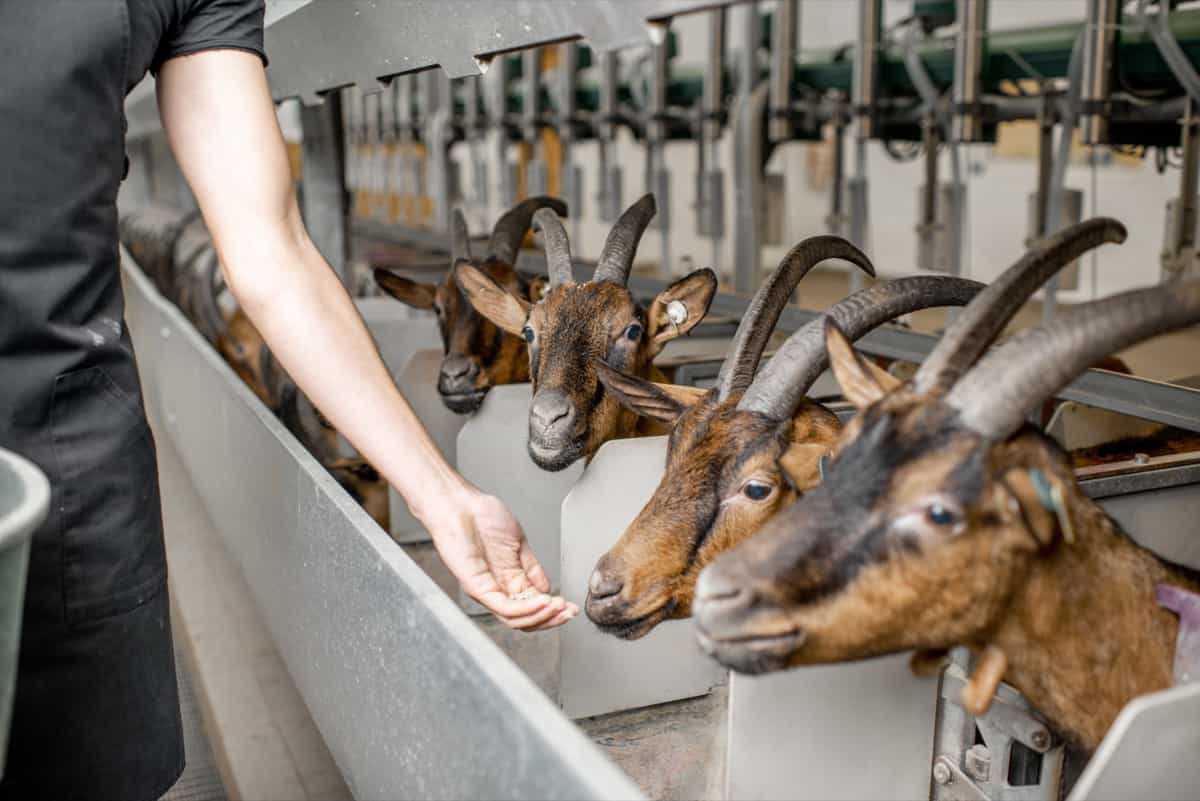
Regular health monitoring, including routine physical exams and diagnostic testing, allows for early detection of diseases and prompt intervention. Implementing strict quarantine protocols for sick animals and implementing effective treatment plans can help control disease outbreaks and prevent further spread within the herd.
Utilizing Data Analytics for Goat Farm Management
Goat farm management that uses data analytics includes gathering, evaluating, and interpreting data to make well-informed choices that maximize profitability, efficiency, and production. By using data analytics tools and technology, goat producers may learn a great deal about many facets of their business, including milk production, reproduction rates, feed efficiency, and health monitoring.
Data analytics may assist farmers in making data-driven choices to enhance herd management techniques by identifying trends, patterns, and correlations in their data. For example, analyzing milk production data can help farmers identify high-performing goats and adjust feeding regimens accordingly. Monitoring health data can help detect early signs of illness and implement timely interventions.
Enhancing Reproductive Efficiency with Modern Techniques
Enhancing reproductive efficiency in goats with modern techniques involves utilizing advanced reproductive technologies to improve breeding outcomes, increase fertility rates, and optimize reproductive performance. Techniques like artificial insemination, embryo transfer, and hormone synchronization are commonly used to enhance reproductive efficiency in goat herds.
Artificial insemination allows farmers to breed goats with superior genetics, increasing the likelihood of desirable traits in offspring. Embryo transfer enables the production of multiple offspring from a single superior female, maximizing genetic potential and accelerating genetic progress in the herd. Hormone synchronization protocols can help optimize breeding schedules, improve conception rates, and reduce the time between pregnancies.
Smart Watering Systems for Efficient Goat Farming
Smart watering systems for efficient goat farming utilize technology to optimize water usage, ensure proper hydration for the animals, and reduce labor requirements. These systems typically include sensors, controllers, and automated watering devices that monitor water levels, flow rates, and water quality in real time.
Sensors installed in water sources and watering devices can detect water levels and monitor water quality parameters such as temperature and pH. Controllers can adjust water flow rates based on the animals’ needs and environmental conditions, ensuring a consistent and adequate water supply. Automated watering devices deliver water to the goats at specified intervals or on demand, reducing water wastage and preventing contamination.
Leveraging IoT Devices for Real-Time Goat Monitoring
Leveraging IoT devices for real-time goat monitoring involves utilizing interconnected sensors, cameras, and data analytics to track various aspects of goat health, behavior, and environmental conditions in real-time. IoT devices are used to monitor parameters such as body temperature, activity levels, feeding patterns, and location of individual goats within the herd.
In case you missed it: Protecting Your Flock: A Comprehensive Guide to Vaccination Schedule for Goats and Sheep
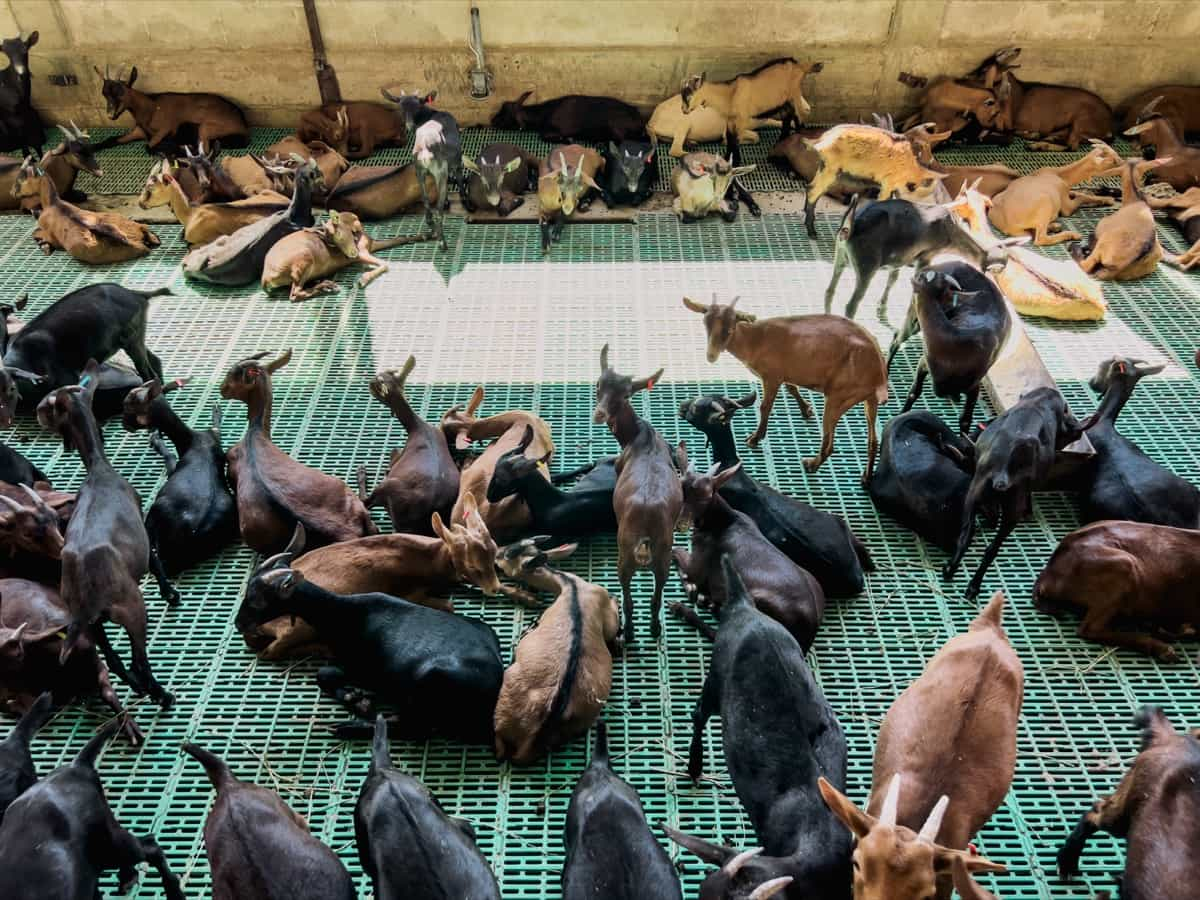
Sensors attached to goats can collect data on vital signs and movements, providing insights into their health and well-being. Cameras can capture live footage of the herd, allowing farmers to remotely monitor behavior and detect any signs of distress or unusual activity. Data collected from IoT devices can be analyzed to identify patterns, trends, and anomalies, enabling proactive decision-making and timely interventions to ensure the health and welfare of the goats.
Enhancing Meat Quality with Modern Farming Practices
Enhancing meat quality with modern farming practices involves implementing a range of strategies to improve the taste, texture, and nutritional value of goat meat. These practices include genetic selection for desirable traits, optimized nutrition programs, stress reduction techniques, and proper handling and processing methods.
Genetic selection focuses on breeding animals with superior meat quality characteristics, such as tenderness, flavor, and marbling. Optimized nutrition programs ensure that goats receive a balanced diet that promotes muscle development and enhances meat quality. Stress reduction techniques, such as providing a comfortable living environment and minimizing handling stress, can improve meat tenderness and flavor.
Proper handling and processing methods, including humane slaughter practices and efficient meat processing techniques, help maintain meat quality from farm to table. By incorporating these modern farming practices, farmers can produce high-quality goat meat that meets consumer expectations for taste, texture, and nutritional value, ultimately enhancing the market value and competitiveness of their products.
The Future of Goat Farming: Trends and Innovations
The future of goat farming is characterized by trends and innovations that focus on sustainability, technology integration, and product diversification. Key trends include the adoption of precision farming techniques, such as data analytics and IoT devices, to optimize herd management practices.
In case you missed it: How to Start Profitable Pygmy Goat Farming: Business Plan and Requirements
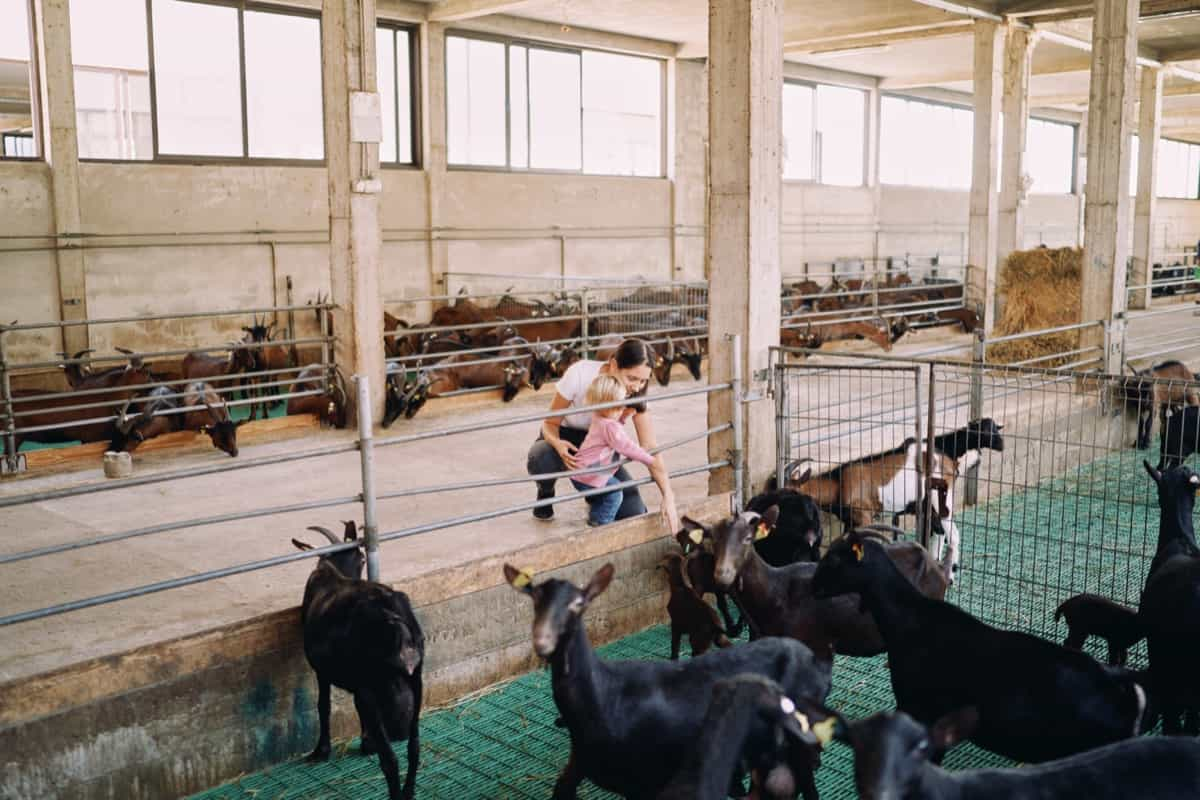
Innovations in breeding and genetics are driving improvements in productivity and meat quality. Sustainable farming practices, such as organic and pasture-based systems, are gaining popularity. Additionally, product diversification, such as value-added goat cheese and milk products, is expanding market opportunities for goat farmers.
Conclusion
The future of goat farming technology holds great promise for advancing goat husbandry. By integrating innovative technologies, sustainable practices, and market-driven strategies, goat farmers can enhance productivity, improve animal welfare, and meet the evolving demands of the industry.
- Goat Farming Technology: The Future of Goat Husbandry
- How to Build a Low-budget Goat Shed: Cheap Ideas and Tips
- Goat Farming Training Programs in India: A Beginner’s Guide
- Types of Pesticides Used in Agriculture: A Beginner’s Guide
- Economical Aquaculture: A Guide to Low-Budget Fish Farming
- 15 Common Planting Errors That Can Doom Your Fruit Trees
- How to Make Houseplants Bushy: Effective Tips and Ideas
- Innovative Strategies for Boosting Coconut Pollination and Yield
- Pollination Strategies for Maximum Pumpkin Yield
- The Complete Guide to Chicken Fattening: Strategies for Maximum Growth
- Natural Solutions for Tulip Problems: 100% Effective Remedies for Leaf and Bulb-Related Issues
- Revolutionizing Citrus Preservation: Towards a Healthier, Greener Future
- Natural Solutions for Peony Leaf and Flower Problems: 100% Effective Remedies
- Maximizing Profits with Avocado Contract Farming in India: A Comprehensive Guide
- Natural Solutions for Hydrangea Problems: 100% Effective Remedies for Leaf and Flowers
- The Ultimate Guide to Choosing the Perfect Foliage Friend: Bringing Life Indoors
- From Sunlight to Sustainability: 15 Ways to Use Solar Technology in Agriculture
- The Ultimate Guide to Dong Tao Chicken: Exploring from History to Raising
- The Eco-Friendly Makeover: How to Convert Your Unused Swimming Pool into a Fish Pond
- Mastering the Art of Delaware Chicken Farming: Essentials for Healthy Backyard Flocks
- 20 Best Homemade Fertilizers for Money Plant: DIY Recipes and Application Methods
- How to Craft a Comprehensive Free-Range Chicken Farming Business Plan
- Brighten Your Flock: Raising Easter Egger Chickens for Beauty and Bounty
- How to Optimize Your Poultry Egg Farm Business Plan with These Strategies
- Subsidy for Spirulina Cultivation: How Indian Government Schemes Encouraging Spirulina Farmers
- Ultimate Guide to Raising Dominique Chickens: Breeding, Feeding, Egg-Production, and Care
- Mastering the Art of Raising Jersey Giant Chickens: Care, Feeding, and More
- Ultimate Guide to Raising Legbar Chickens: Breeding, Farming Practices, Diet, Egg-Production
- How to Raise Welsummer Chickens: A Comprehensive Guide for Beginners
- How to Protect Indoor Plants in Winter: A Comprehensive Guide
- Ultimate Guide to Grow Bag Gardening: Tips, Tricks, and Planting Ideas for Urban Gardeners
- Guide to Lotus Cultivation: How to Propagate, Plant, Grow, Care, Cost, and Profit
- Agriculture Drone Subsidy Scheme: Government Kisan Subsidy, License, and How to Apply Online
- Ultimate Guide to Raising Araucana Chickens: Breed Profile, Farming Economics, Diet, and Care
- Bringing Hydroponics to Classroom: Importance, Benefits of Learning for School Students
- Ultimate Guide to Raising Polish Chickens: Breed Profile, Farming Economics, Diet, and Care




















